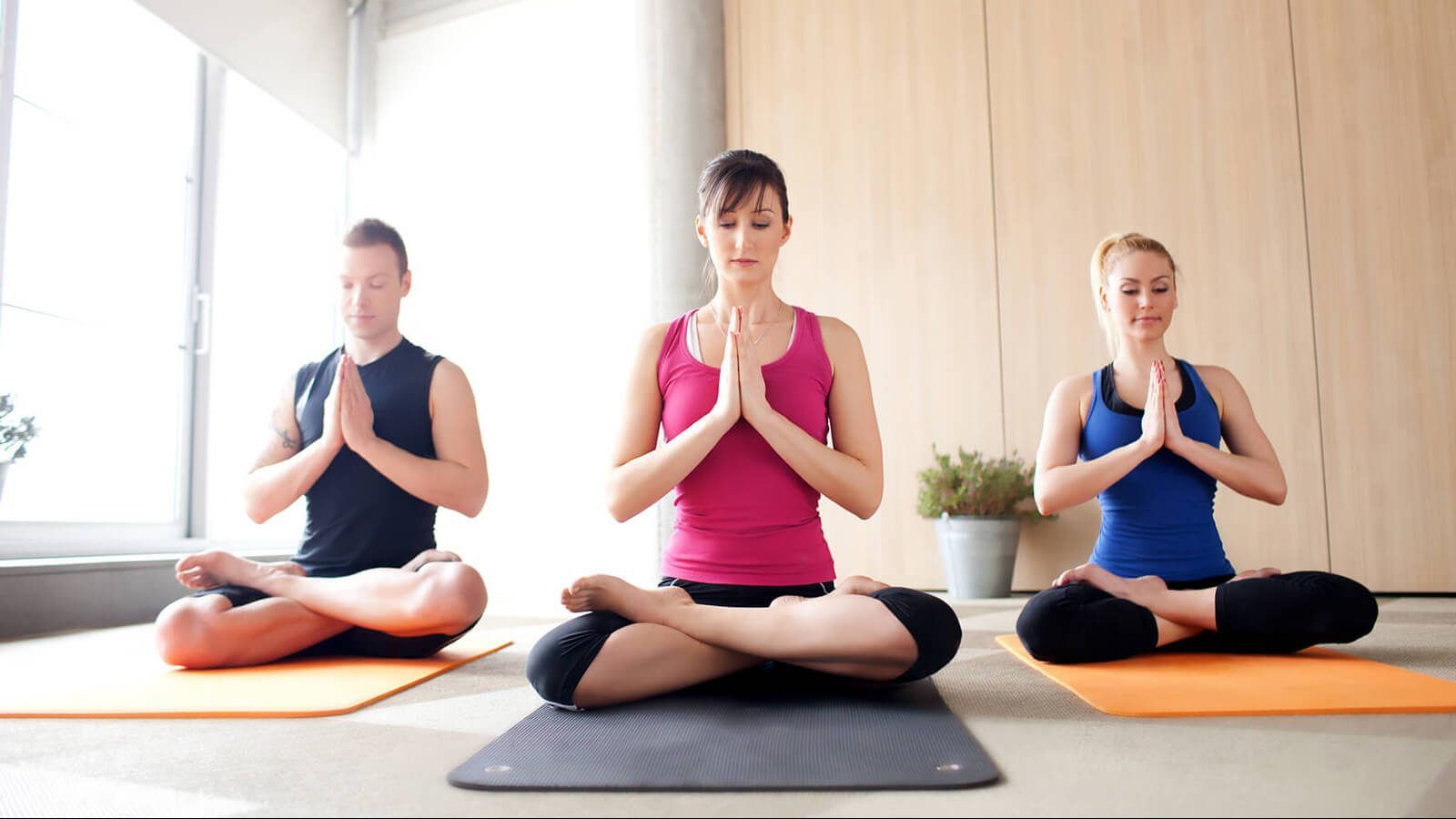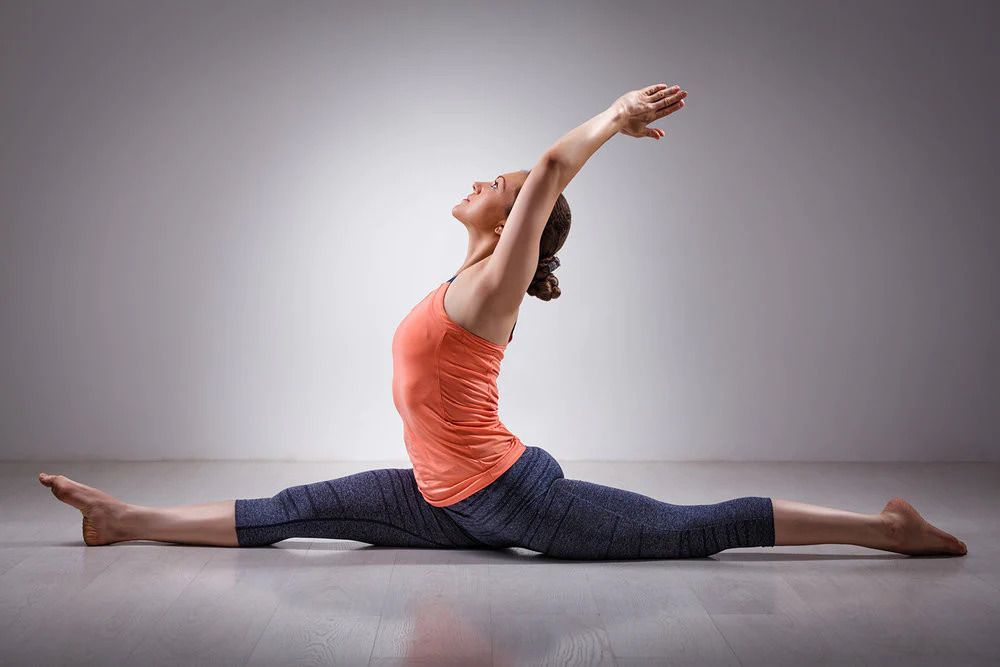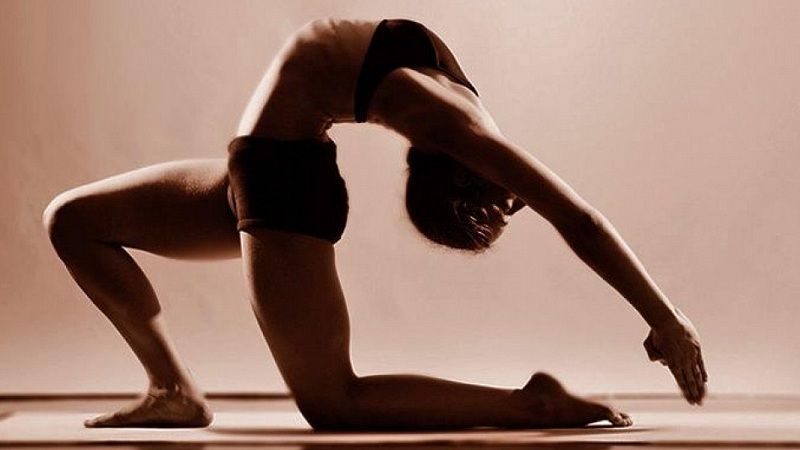
I. Introduction to the topic
Yoga is considered a comprehensive form of exercise for both physical and mental well-being and is an excellent choice for a healthy lifestyle. There are many reasons for the popularity of yoga, including its positive impact on health, improvement of mood, reduction of stress and anxiety, enhancement of concentration, and improvement of sleep. Additionally, yoga helps improve body strength and flexibility, strengthens the cardiovascular and immune systems, reduces pain, and enhances mental health. With different types of yoga suitable for all levels and preferences, if you are looking for a way to improve your health and maintain a healthy lifestyle, learn more about yoga and why it is an excellent choice.
Table of Content
I. Introduction to the topic II. Benefits of Yoga for Health III. Yoga and Life IV. Popular Types of Yoga V. How to start practicing Yoga VI. Conclusion
II. Benefits of Yoga for Health

1. Yoga helps reduce stress and anxiety tress and anxiety are common issues in modern society, and yoga can help alleviate these conditions. Practicing yoga can reduce cortisol, the stress hormone in the body, helping you feel more relaxed and focused on the present moment.
2. Yoga improves respiratory function Regular yoga practice can improve respiratory function by increasing the ability to breathe deeply, improving bronchial inflammation, reducing respiratory congestion, and enhancing immunity. Yoga helps breathe more evenly and increases air circulation in the body, reducing symptoms of breathing difficulties and respiratory-related illnesses.
3. Yoga strengthens cardiovascular health Yoga has many benefits for cardiovascular health, including lowering blood pressure, reducing cholesterol, and decreasing the risk of heart disease. Regular yoga practice also helps strengthen the heart's endurance, improve blood circulation, and reduce tension. This is a simple, non-invasive, and effective method for cardiovascular health.

4. Yoga helps alleviate back pain Yoga is considered an effective method to help alleviate back pain. Regular yoga practice can improve posture, increase body flexibility, and help reduce muscle tension. It also increases blood circulation to the back area, helping to reduce inflammation and pain. If done correctly and completely, yoga can effectively reduce back pain and improve quality of life.
5. Yoga helps strengthen mental health Yoga is an excellent method to strengthen mental health. Regular yoga practice can help reduce stress, anxiety, and depression, improve mood, and reduce stress. It also enhances concentration, increases confidence, and enhances the ability to face life's challenges. Yoga provides a balance between the mind and body, helping to improve mental health and overall health.
6. Yoga helps strengthen reproductive health Yoga can help strengthen the reproductive health of both women and men. Yoga postures can improve blood circulation and increase blood flow to the pelvic area, helping to improve reproductive function. It also helps reduce stress and balance hormones, regulating menstrual cycles and reducing symptoms of menopause. In addition, practicing yoga also helps to strengthen mental health and increase confidence in sexual relationships.
III. Yoga and Life

1. Yoga and Weight Loss Yoga can help make the weight loss process more effective. Regular yoga practice can improve the body's strength and flexibility, help burn calories, and aid in weight loss. It also helps reduce stress and anxiety, control cravings, and support a focus on healthy eating and lifestyle habits. Additionally, certain yoga poses such as Salamba Sarvangasana (to treat headaches and provide support), Halasana (to reduce lower back pain and belly fat) can expedite the weight loss process. Practicing yoga in combination with a healthy diet and regular exercise can help you achieve sustainable weight loss.
2. Yoga and Sleep Yoga can improve the quality of sleep and reduce symptoms of insomnia. Regular yoga practice can reduce stress and anxiety, which are primary causes of sleep problems. Additionally, yoga can help alleviate pain and improve body flexibility, helping the body to relax and prepare for a deeper sleep. Certain yoga poses such as Savasana, Balasana, and Uttanasana are recommended to help reduce stress and prepare for a better night's sleep. Regular yoga practice can help you have a deeper sleep and feel more refreshed in the morning.
3. Yoga and Memory Enhancement Yoga can improve memory and concentration abilities. Regular yoga practice can reduce stress and anxiety, which are factors that can affect memory and concentration. Additionally, yoga poses such as Vrikshasana, Ardha Pincha Mayurasana, and Halasana help provide oxygen to the brain, improve blood circulation, and enhance concentration. Regular yoga practice can help improve memory, concentration, and brain function.
4. Yoga and Pain Reduction Yoga is an effective method to reduce pain. Regular yoga practice can enhance body flexibility and strength, while reducing stress and pressure on the joints and muscles. Many yoga poses such as Adho Mukha Svanasana, Balasana, and Virabhadrasana can alleviate back pain, neck pain, shoulder pain, and headaches. Regular yoga practice can also help reduce pain in conditions such as joint pain and muscle pain. Yoga is a natural and effective method to reduce pain and improve quality of life.
IV. Popular Types of Yoga

1. Hatha Yoga Hatha Yoga is one of the fundamental branches of yoga. It focuses on the combination of yoga postures (asanas), breathing, and concentration to enhance both physical and mental health. Practicing Hatha Yoga helps improve flexibility, balance, and strength. Additionally, Hatha Yoga reduces stress, enhances memory, and promotes relaxation. Regular practice of Hatha Yoga can improve overall health and quality of life.

2. Vinyasa Yoga Vinyasa Yoga is a dynamic style of yoga that emphasizes the combination of yoga postures (asanas), breathing, and seamless movements. Vinyasa Yoga typically involves a faster pace and requires more strength than Hatha Yoga. Practicing Vinyasa Yoga helps improve strength, flexibility, and focus. Additionally, Vinyasa Yoga reduces stress and enhances cardiovascular health. Regular practice of Vinyasa Yoga can improve overall health and well-being.

3. Ashtanga Yoga Ashtanga Yoga is a dynamic style of yoga that originated in India. This style focuses on fast-paced and seamless sequences of movements, combined with Ujjayi breathing. These movement sequences help improve flexibility, strength, and focus. Ashtanga Yoga often requires a high level of strength and skill, but it provides numerous benefits for both physical and mental health. Ashtanga Yoga is considered an effective method for improving health and reducing stress.

4. Bikram Yoga Bikram Yoga is a style of yoga practiced in a hot room with a temperature of about 40 degrees Celsius and high humidity. This style consists of 26 postures and 2 breathing exercises, focusing on flexibility, strength, and balance. Practicing Bikram Yoga can activate the fat-burning process and enhance mental health. However, practicing in a hot environment can be dangerous if not done correctly.

5. Kundalini Yoga Kundalini Yoga is a style of yoga that combines movement, concentration, and breathing to awaken the "Kundalini" - a dormant energy in the body. This style focuses on spiritual and mental balance, reducing stress, and enhancing mental health. Kundalini Yoga is also considered a method for expanding intelligence and enhancing the ability to concentrate and be creative. The movements in Kundalini Yoga are performed at a fast pace and are combined with specific breathing techniques.
V. How to start practicing Yoga

If you want to start practicing Yoga, follow these steps:
1. Research and choose a Yoga style that suits you: There are various Yoga styles, from Hatha Yoga to Ashtanga Yoga, so you should research and choose a style that fits your preferences and needs.
2. Find a Yoga class or Yoga teacher: If you are a beginner, find a Yoga class or teacher to guide you and ensure that you practice correctly.
3. Prepare equipment: To practice Yoga, you need to prepare equipment such as a Yoga Mat, appropriate clothing, and drinking water.
4. Practice Yoga regularly: To reap the benefits of Yoga, you need to practice regularly, at least 2-3 times a week. Start with basic poses and gradually increase the difficulty.
5. Focus on breath and body awareness: Yoga is not only about poses but also a combination of movement and breath. Focus on breath and body awareness to achieve spiritual and physical balance.
Remember that Yoga is a lifelong journey, and you cannot improve your level quickly. Therefore, be patient, enjoy the learning process and experience of Yoga.
VI. Conclusion
Yoga has many benefits for both physical and mental health. Regular practice of yoga can help reduce stress and anxiety, improve cardiovascular health, alleviate back pain, enhance memory and sleep, boost reproductive health, promote weight loss, and improve mood. To begin practicing yoga, you can join yoga classes or search for online instructional videos to practice at home. The key is to practice yoga regularly and correctly to achieve the amazing benefits it offers.
